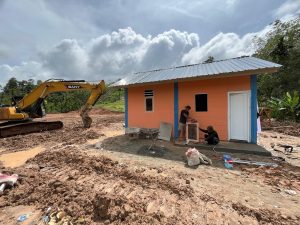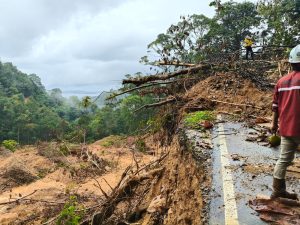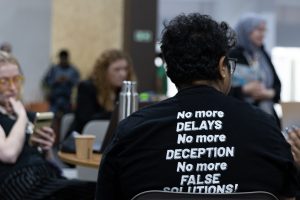Jakarta – The Institute for Essential Services Reform (IESR) appreciates the significant leap in renewable energy targets in PLN’s 2025-2034 Electricity Supply Business Plan (RUPTL). In a statement on Wednesday, 28 May, the institute also provided critical notes on several aspects, ranging from the inclusion of nuclear power plants (NPPs) to the gap between the targets set and Indonesia’s climate commitments in international agreements.
In the latest RUPTL approved by the Ministry of Energy and Mineral Resources on Monday, the share of new and renewable energy (NRE) generation is set at 42.6 GW, equivalent to 61% of total new generating capacity. Other additions include 10.3 GW of energy storage systems, including pumped hydroelectric and battery storage.
However, in addition to NRE, there are still allocations for fossil fuel plants, specifically 10.3 GW of gas-based and 6.2 GW of coal-fired power plants, including 2.8 GW that are scheduled to remain operational after 2030.
IESR Executive Director Fabby Tumiwa welcomed the increase in NRE generating capacity compared to the previous RUPTL. He sees this surge as a positive signal for the energy transition. “The planned NRE capacity increased significantly, especially solar energy, which reached 17.1 GW. This is a step forward,” he said.
However, Fabby also underlined that the target falls short of the Just Energy Transition Partnership (JETP) commitment of 56 GW of renewable energy capacity by 2030, and is not sufficient to meet the 1.5°C global warming limit target under the Paris Agreement. “This target is not ambitious enough if we want to peak electricity sector emissions before 2030. There is still a lot to catch up on,” he said.
Threat of electricity crisis looms
IESR also highlighted fundamental problems in the implementation of the previous RUPTL. Fabby revealed that of the planned 10 GW of new power plants in the 2021-2030 RUPTL, only 1.6 GW had successfully operated (COD) by the first semester of 2025.
“One of the inhibiting factors is PLN’s inability to conduct large-scale auctions quickly, as well as the long-winded PPA negotiation process,” said Fabby. “This threatens the realisation of NRE and the security of the national electricity supply in the future.”
The inclusion of 0.5 GW of nuclear plants in the RUPTL for the first time also sparked criticism. Fabby emphasised that there has been no official decision from the President regarding the construction of nuclear power plants, and Indonesia does not yet have an adequate legal framework or infrastructure in place.
“Nuclear power plants are not only expensive and high-risk, but there are also no strong operational regulations, unclear technology, and minimal public acceptance,” he said.
Apart from nuclear, the allocation of 10.3 GW of gas-based power plants is also considered risky. Excessive dependence on gas is considered vulnerable to price and supply fluctuations, especially since PLN itself is already struggling to fulfil its gas needs for operations.
“If gas demand increases two to three times, PLN will face an energy crisis. Renewable energy is lower risk and more affordable in the long run,” said Fabby.
The RUPTL also noted the participation of private power producers (IPPs) with a potential investment of Rp1,341.8 trillion for NRE development. Deon Arinaldo, IESR’s Energy System Transformation Programme Manager, said his organisation’s study found 333 GW of renewable energy potential in Indonesia that is financially viable.
“About 60 per cent of that potential has an EIRR above 10 per cent when using the tariff from Presidential Regulation 112/2022. This is very attractive for investors,” said Deon.
He added that in addition to the PLN procurement scheme, there needs to be regulations that accelerate access to the transmission network (PBJT). This will expand NRE development options, while opening up opportunities for consumers and the private sector.
“The certainty of PBJT will help PLN manage network development and accelerate the achievement of or even exceed the RUPTL target,” he concluded.
Concluding their note, IESR encouraged the government to accelerate regulatory reforms and tariff schemes, strengthen PLN’s capacity, and develop a structured and transparent power plant auction schedule.
“The opportunity to build a clean and affordable energy system is wide open. But without serious execution, the RUPTL will only be a plan on paper,” said Fabby Tumiwa. (Hartatik)
Banner photo: liyuhan/shutterstock.com














